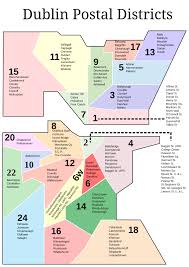Exploring Dublin: Ireland’s Thriving Capital City

Introduction
Dublin, the capital of Ireland, is renowned for its rich history, vibrant culture, and lively atmosphere. As one of the fastest-growing cities in Europe, Dublin has become a significant hub for tourism, business, and education. Its blend of ancient and modern institutions makes it a fascinating destination for both locals and visitors alike. The increased attention on Dublin, especially in the post-pandemic landscape, highlights the importance of this city in contemporary Europe and its relevance in global discussions about urban development and cultural preservation.
Historic Significance
The city’s origins date back to the Viking settlement in the 9th century. Over the centuries, Dublin has burgeoned into a city of significant historical importance, with landmarks such as Dublin Castle and the iconic Trinity College. The Book of Kells, housed at Trinity College, attracts thousands of visitors and serves as a prime example of Ireland’s literary heritage. The city played a crucial role in Ireland’s struggle for independence, with many historical sites commemorating the pivotal events of the early 20th century.
Cultural Landscape
Dublin has a flourishing arts scene, from literature to theatre and music. It was named a UNESCO City of Literature in 2010, celebrating the legacy of renowned authors such as James Joyce, Samuel Beckett, and W.B. Yeats. The annual Dublin Literature Festival draws literary enthusiasts from around the globe, helping to cement the city’s status as a cultural capital. Additionally, the vibrant neighbourhoods of Temple Bar and Smithfield showcase local artists, musicians, and culinary talents, making them must-visit areas for anyone looking to experience genuine Dublin life.
Current Events and Developments
Recently, Dublin has been undergoing significant urban development aimed at improving infrastructure and sustainability. The ongoing regeneration of the Dublin Docklands and investments in public transport aim to cater to the growing population and enhance the overall living experience. As companies increasingly establish headquarters in Dublin, the city is also witnessing a rise in international talent and innovation. However, this growth comes with challenges, particularly regarding housing affordability and urban planning.
Conclusion
As Dublin continues to evolve, it maintains a delicate balance between preserving its rich heritage and embracing modern advancements. The city’s cultural offerings and historic significance ensure it remains a vital destination in Europe. For those considering a visit or relocation, Dublin presents an exciting opportunity to engage with a city steeped in history while participating in its dynamic present and promising future. The continuing developments in infrastructure, housing, and cultural initiatives suggest that Dublin will only become more significant on the global stage in the years to come.









